Cosmos: How to Plant, Grow, and Nurture Cosmos Flowers
If you’re looking for a low-maintenance flower that will add color to your garden all summer, look no further. I will teach you everything you need to know about planting cosmos seeds and explain how to grow small plants from the nursery quickly.

On my blog WM Design House, I may sometimes use affiliate links, which means a small commission is earned if you purchase via the link. The price will be the same whether you use the affiliate link or go directly to the vendor’s website using a non-affiliate link. Read my full disclosure policy here.
I love planting a cutting garden, and there’s something gratifying about growing a flower garden from seed. The process of planting, nurturing, and watching them grow is a journey I cherish. Cosmos, in particular, are one of my favorites. They’re incredibly easy to cultivate and provide stunning cut flowers to brighten the home.
Cosmos plants are lauded for their resilience against most diseases, making them a low-maintenance choice for gardeners. However, they’re not entirely immune; a few diseases can occasionally affect them.
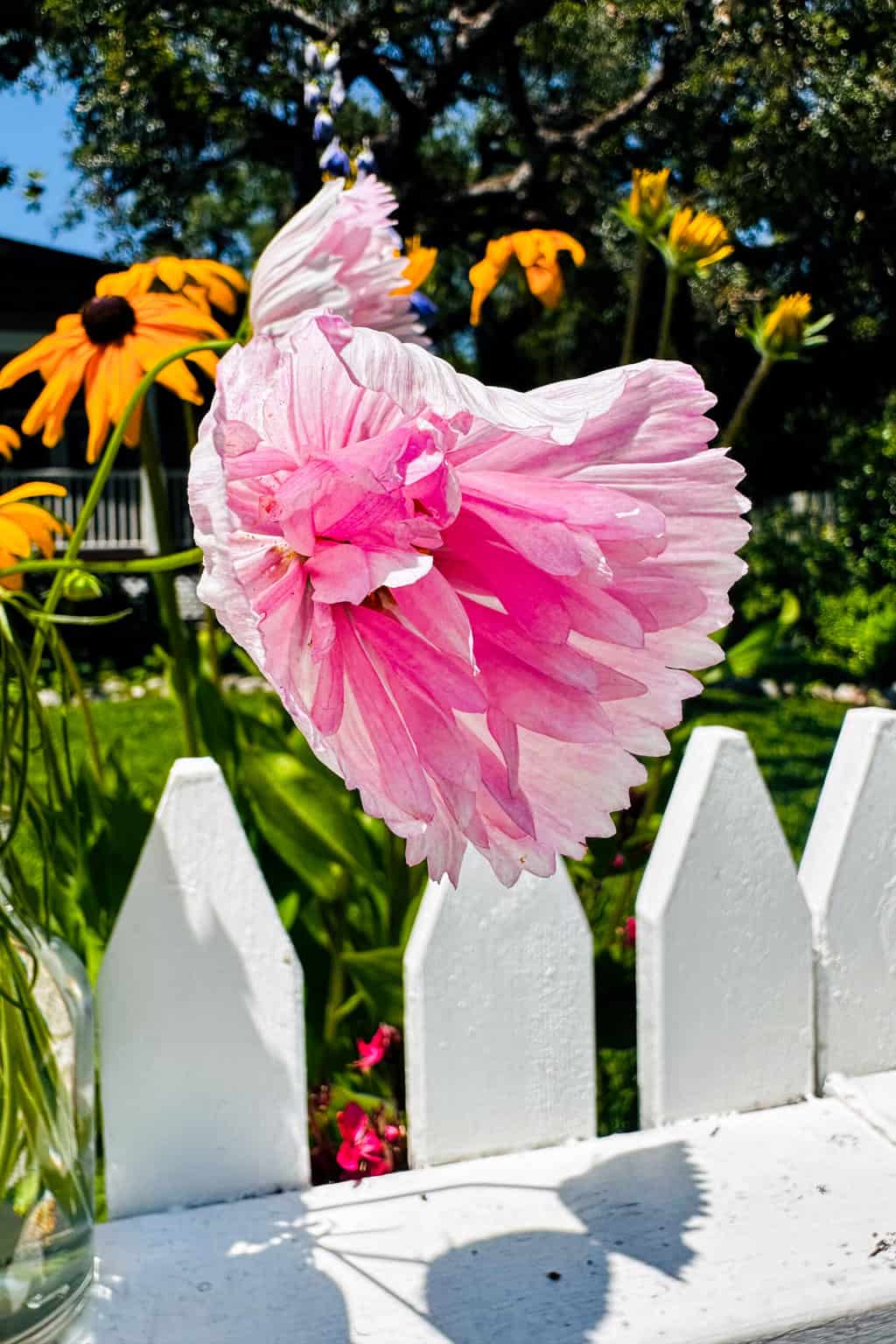
All About Cosmos
Cosmos are popular annual flowers treasured for their colorful, daisy-like flowers. They belong to the genus Cosmos within the family Asteraceae, which includes Daisies, Sunflowers, and Asters. Cosmos are known for their simplicity and ease of growth, making them a favorite among gardeners of all skill levels. They come in various colors, including pink, white, red, and purple, and are the perfect flower for the beginning gardener. I have been gardening for years and look forward to planting them yearly in the early spring.

There are three main ways to grow cosmos: directly sowing seeds outdoors, starting seeds indoors first and then transplanting outdoors, and planting small plants from the nursery.
Materials Needed
- Cosmos Seeds
- Gardening trowel
- Planting Soil
- Peat Pots or trays (If planting indoors)
- Spray bottle
- Gardening gloves
How to Plant Cosmos Seeds
Planting Cosmos from Seeds Outdoors:

- Timing: Wait until all danger of frost has passed in the spring before sowing your seeds.
- Location: Choose a sunny spot in your garden with well-drained soil. Cosmos can tolerate poor soil but prefers drier soil. Avoid overly rich soil, as it can make the plants grow tall and lanky.
- Soil: Cosmos are known for being easy to grow and not requiring very fussy soil conditions. However, they do best in well-drained soil with a neutral to slightly alkaline pH (around 7.0 to 8.0).
- Planting: Cosmos prefers loose soil about 8 inches deep with good drainage. Sow the seeds lightly, covering them with only about ¼ inch of fine soil. Seed packets usually recommend specific spacing, but aim for 12-18 inches between plants for shorter varieties and 1-2 feet for taller ones. You can also scatter the seeds more densely and let the plants support each other (the method I prefer), but you need to ensure they have good airflow.
- Germination: Cosmos seeds typically germinate within 7-21 days at around 75 degrees Fahrenheit.
Starting Cosmos Seeds Indoors:

- Timing: The best time to start seeds indoors is 4-6 weeks before the last frost date in your area.
- Materials: You’ll need seed trays, potting mix, and a sunny windowsill.
- Planting: Fill your seed trays with potting mix and moisten it. Sow the seeds lightly and cover them with a thin layer of soil. Place the trays in a sunny location and keep the soil moist but not soggy. Cosmos are sun-loving plants, so keep this in mind.
- Transplanting: Once the cosmos seedlings have a few sets of true leaves (not the tiny initial leaves), you can harden them off and transplant them outdoors after all danger of frost has passed. To harden them off, gradually expose them to outdoor conditions for a week before planting them in their permanent location.
Planting annual cosmos purchased from garden centers:
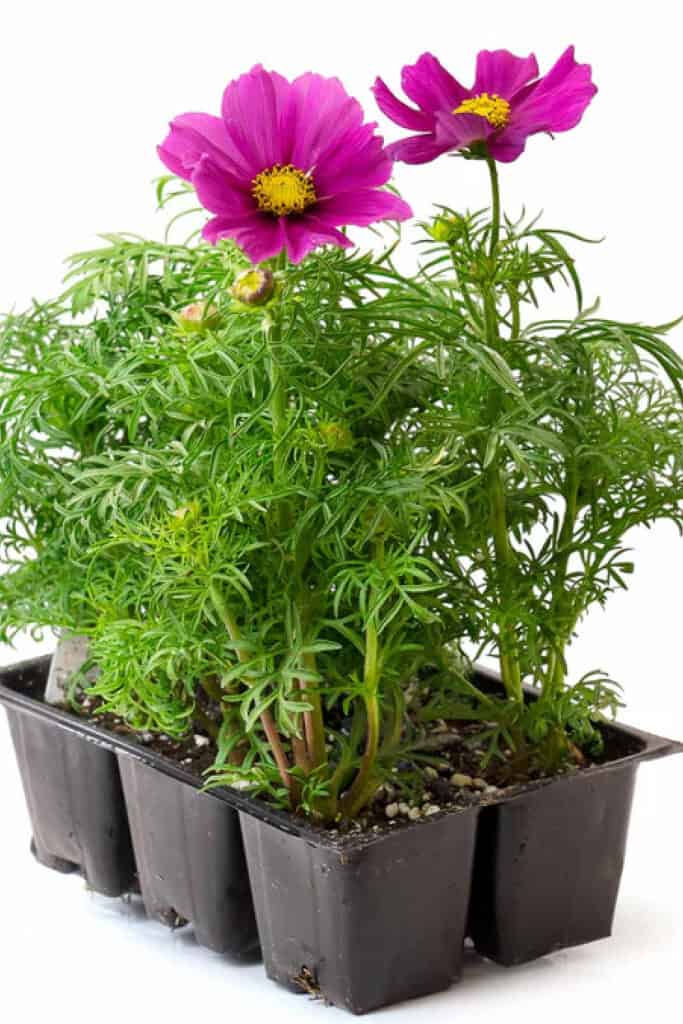
Preparing the Planting Hole:
- Gently loosen the soil in the chosen spot to a depth of about 8 inches. This will help the roots establish themselves quickly.
- Dig a hole slightly larger than the root ball of your cosmos plant.
Planting the Cosmos:
- Carefully remove the bedding plants from their nursery container. Try to disturb the root ball as little as possible.
- Place the plant in the hole, ensuring the top of the root ball sits slightly above the surrounding soil level. Don’t bury the stem where the leaves meet the base.
- Gently backfill the hole with soil, firming it down slightly around the base of the plant.
- Water the plant thoroughly to help settle the soil around the roots.
What is the growing season for the cosmos?
Cosmos thrive in warm weather and will bloom continuously through the summer and into fall until the first frost.
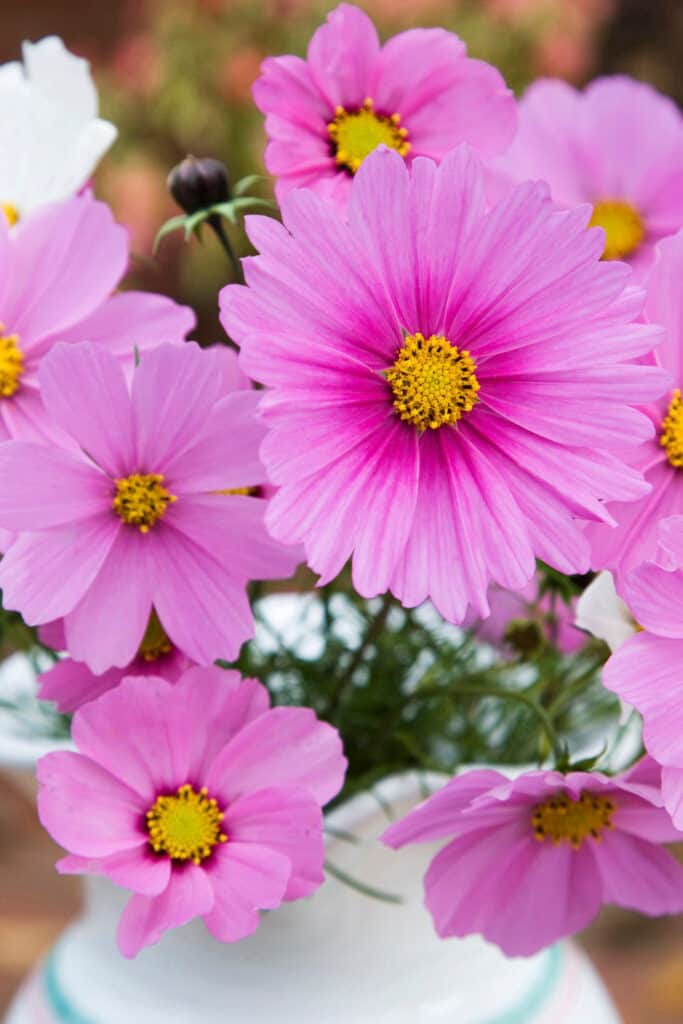
Growth habit
Tall Cosmos
Tall cosmos varieties tend to have a branching, airy growth habit.
- Height: The tall cosmos can range from 3 to 8 feet or even taller, depending on the specific variety.
- Stems: Their stems are typically hollow and somewhat thin compared to the plant’s height. This is why staking is often recommended for taller varieties, especially if exposed to wind or heavy rain. Their flower head is typically more significant than the short cosmos.
Here are a few of my favorite tall varieties:
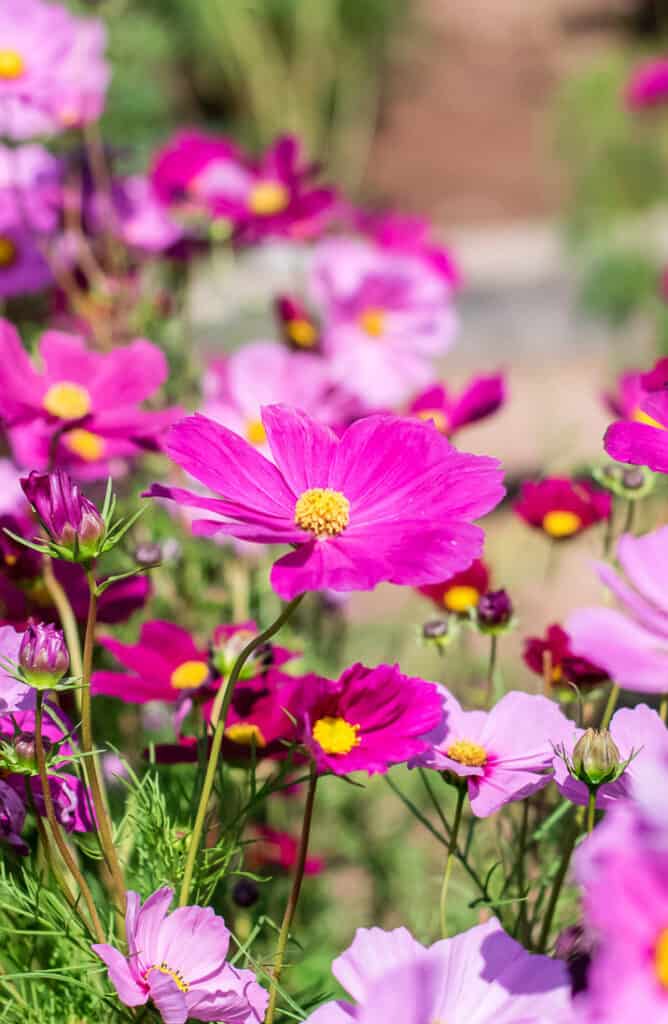
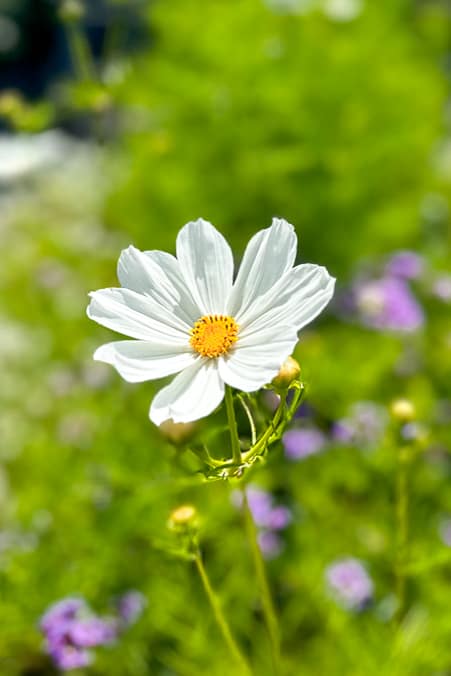
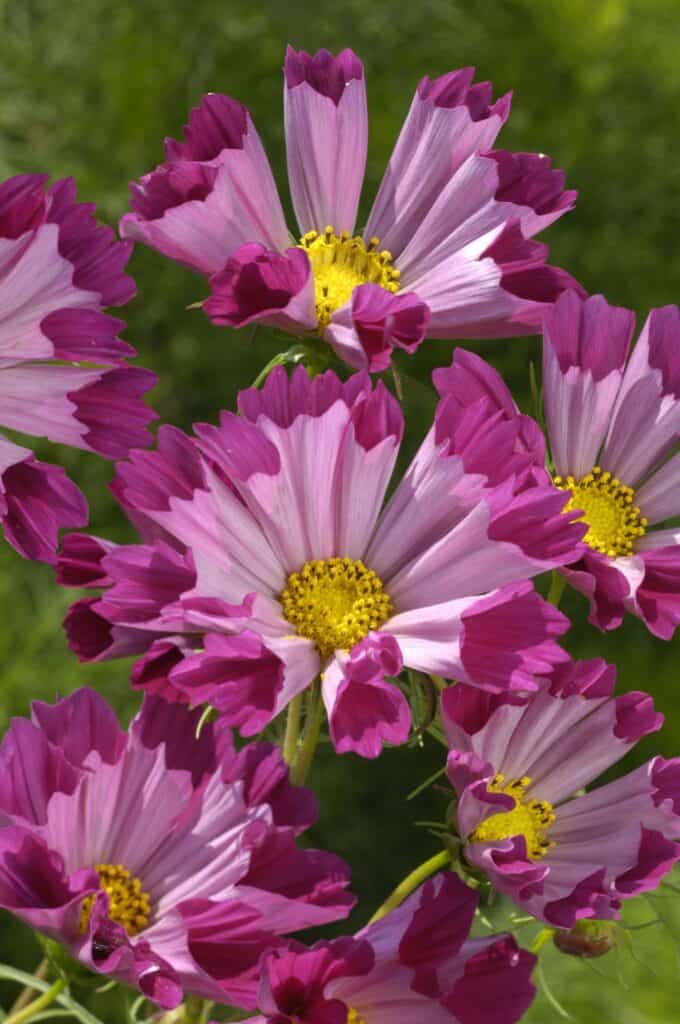
- Cosmos bipinnatus ‘Sensation Mix’ – This variety can reach up to 5 feet in height and produces large, showy flowers in shades of pink, white, and maroon. It’s known for its fine, feathery foliage and makes an excellent backdrop in flower beds.
- Cosmos bipinnatus ‘Purity’ – Known for its pure white flowers, this variety can grow up to 6 feet tall. ‘Purity’ is a favorite for its elegant appearance and its ability to attract butterflies and bees.
- Cosmos bipinnatus ‘Sea Shells’ – This unique variety can grow up to 4 feet tall and features tubular petals that curl inward, resembling seashells. The flowers come in a range of colors including pink, white, and red, adding a distinctive look to any garden.
Short Cosmos
Short cosmos tend to be more compact and bushy than their taller cousins. They will branch out more from the base, creating a fuller and denser plant than tall varieties’ airier structure.
- Height: typically ranging from 1 to 2 feet in height.
- Spreading Habit: Some short cosmos varieties may have a slightly spreading growth habit. This means they will grow wider than tall, creating a mounding effect. This can be especially attractive in edging or mass plantings.
Here are a few of my favorite compact cosmos varieties:
- Cosmos bipinnatus ‘Sonata Series’ – This dwarf variety typically reaches about 2 feet in height, making it ideal for containers or the front of a border. The ‘Sonata Series’ comes in shades of pink, white, and crimson, and its flowers are large and showy despite the plant’s smaller stature.
- Cosmos sulphureus ‘Ladybird’ – This variety is particularly compact, usually growing no taller than 12-24 inches. It features bright, semi-double flowers in shades of orange, yellow, and red. Its smaller size and vibrant colors make it a standout in any garden setting.
- Cosmos bipinnatus ‘Xanthos’ – Unique for its beautiful soft yellow blooms, ‘Xanthos’ is a relatively new variety that grows to about 24 inches in height. It’s perfect for adding a splash of light color to the garden and works well in mixed containers due to its compact form.
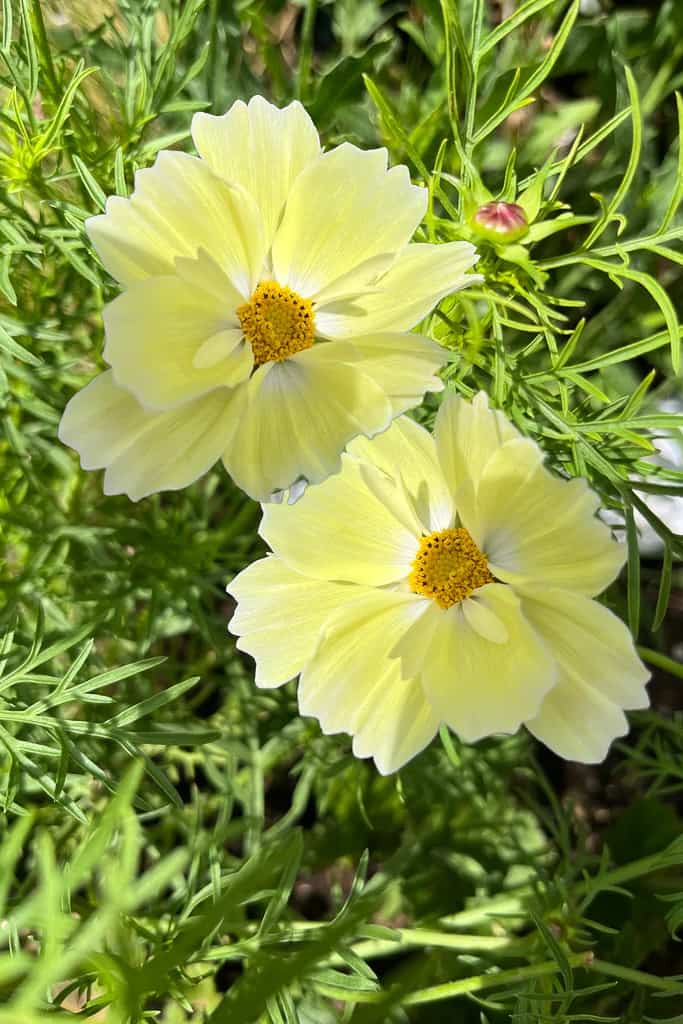


Tip from wendy’s garden:
Choose the Right Location: Cosmos thrive in full sun, so choose a spot in your garden that receives at least 6-8 hours of direct sunlight daily. They can tolerate a little shade but won’t bloom as profusely.
Growing and Caring for Cosmos
Watering:
Cosmos are known for their drought tolerance, meaning they don’t require frequent watering once established. Here’s a watering guide for the cosmos: However, each climate zone could vary, so check your local zone to be sure.
Established Cosmos (In the Ground):
- Frequency: During hot, dry weather, you only need to water deeply once or twice a week.
- Soil Moisture: The key is to let the soil dry out slightly between waterings. Stick your finger into the soil a couple of inches down. If it feels dry to the touch, it’s time to water.
- Overwatering: Avoid overwatering, which can lead to root rot and other problems.
Newly Planted Cosmos Seeds and nursery plants (In Ground or Pots):
- Frequency: During the first few weeks after planting, you may need to water more regularly, especially during hot weather. Aim to keep the soil consistently moist but not soggy.
- Monitor Closely: Newly planted cosmos are still establishing their root systems, making them more susceptible to drying out.
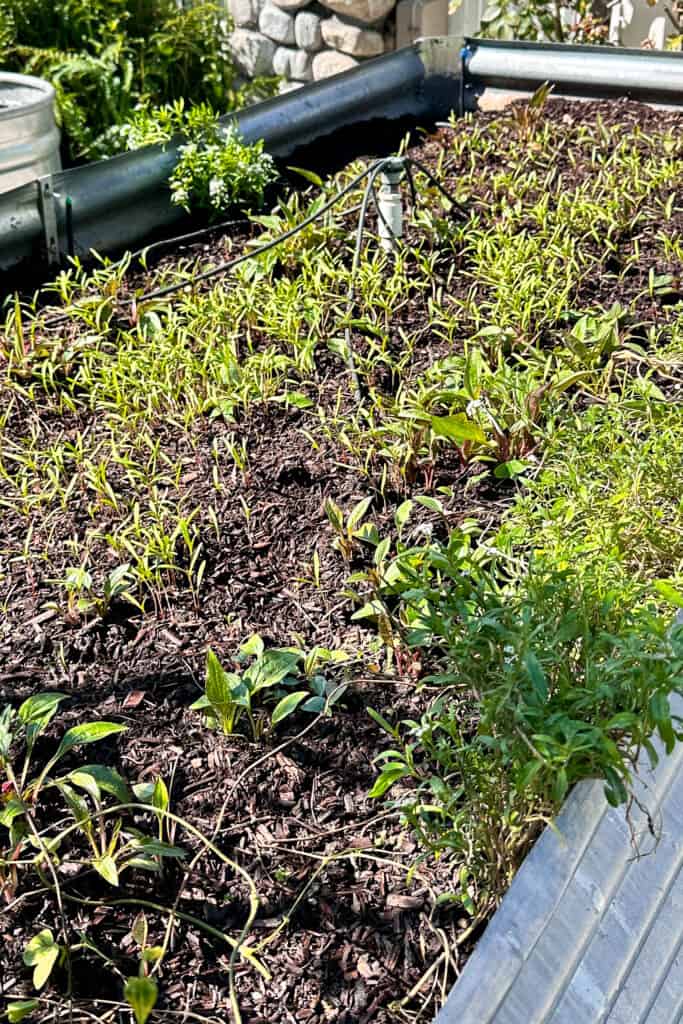
Fertilizing:
These flowers prefer neutral to slightly acidic soil that is not overly rich. If your garden soil is extremely poor, a light application of a balanced, slow-release fertilizer at the time of planting may be beneficial. However, for most gardens, simply incorporating some compost into the soil before planting should provide sufficient nutrients for the cosmos to flourish.
Over-fertile soils can reduce the abundance of blooms, detracting from their natural beauty. Therefore, it’s best to err on the side of caution and limit the use of additional fertilizers.
Tip from wendy’s garden:
Cosmos are relatively free from serious pest and disease problems. However, keep an eye out for common garden pests such as aphids and treat them promptly if necessary. Good air circulation around the plants helps prevent fungal diseases.
Trimming:
Trimming spent flowers (deadheading) is a great way to encourage your cosmos plants to produce more blooms in summer and fall. You will want to trim the plants for shorter cosmos to get bushier growth.
Mulching:
Mulching around the plant’s base will help keep weeds out and moisture in.
Staking:
Staking your cosmos is entirely up to you and depends on the aesthetic you desire for your garden. While these easy-going flowers are naturally strong, some varieties, notably taller ones, can benefit from extra support. I prefer not to stake mine as it gives my garden a more natural look.
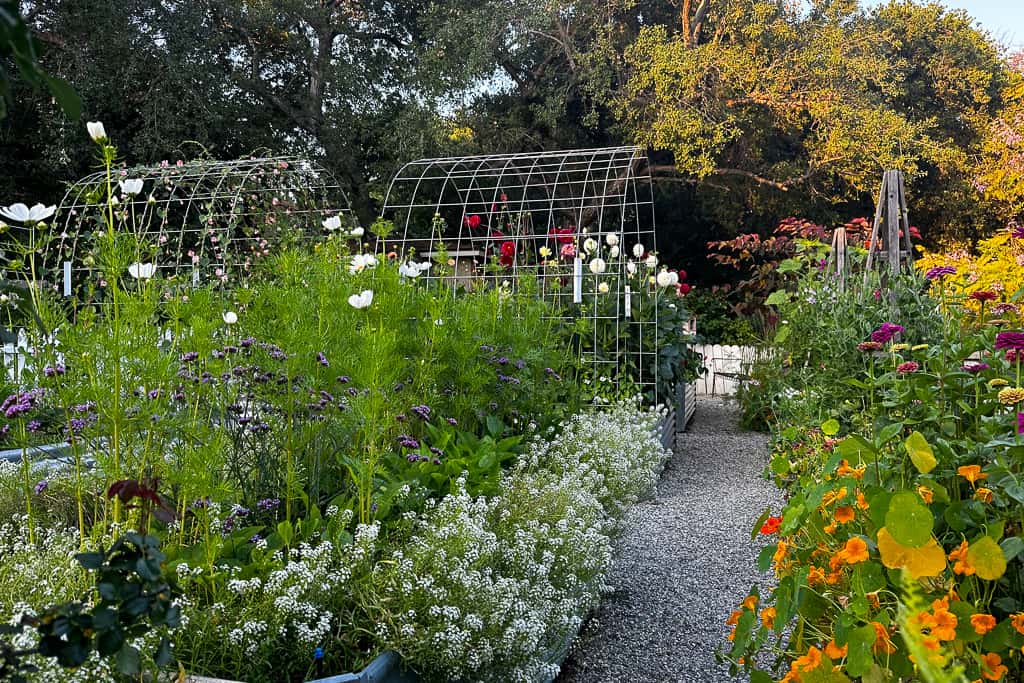
Tip from wendy’s garden:
Letting Some Seed Heads Mature: If you want your cosmos to self-seed for next year, allow some of the late-season flowers to develop into seed heads and drop their seeds.
Cutting Cosmos Flowers:
Cosmos are beautiful flowers for arrangements. When cutting, look for flower buds that have begun to unfurl and show some color but where the petals haven’t completely unfolded yet. The flower head may be slightly rounded or domed rather than completely flat.
Cutting at this stage allows the blooms to continue opening in the vase, giving you a longer display of fresh flowers. Fully opened blooms tend to have a shorter vase life.
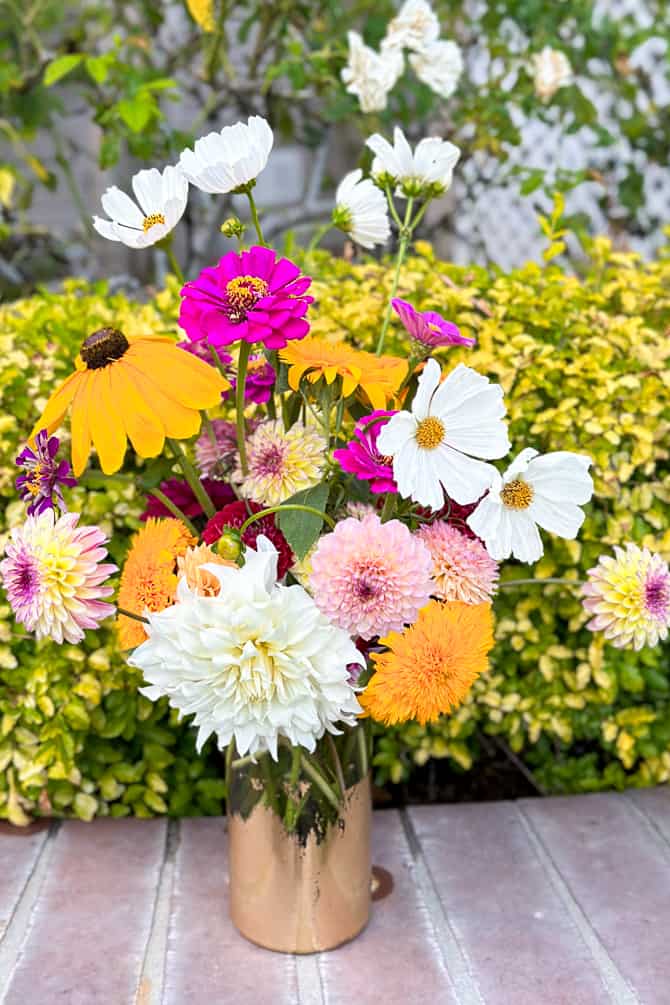
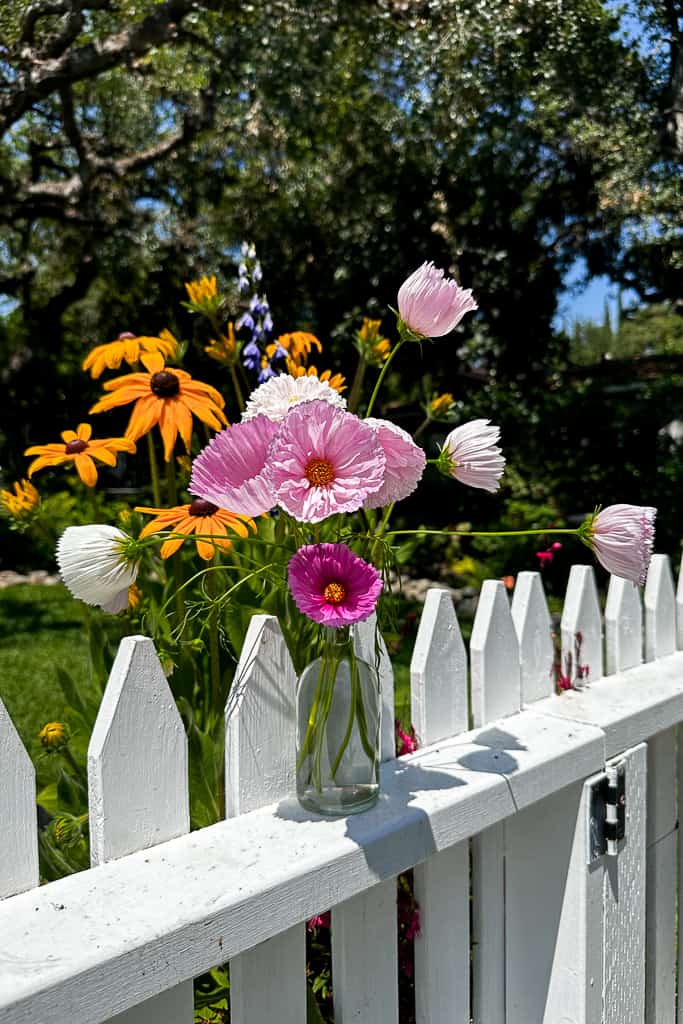
Harvesting seeds:
Timing: The ideal time to cut cosmos flowers for seed harvesting is when the blooms start to fade and lose their vibrancy. The petals may begin to wilt and curl slightly, and the flower head might feel dry to the touch.
Tools: Use sharp pruners or scissors to make clean cuts.
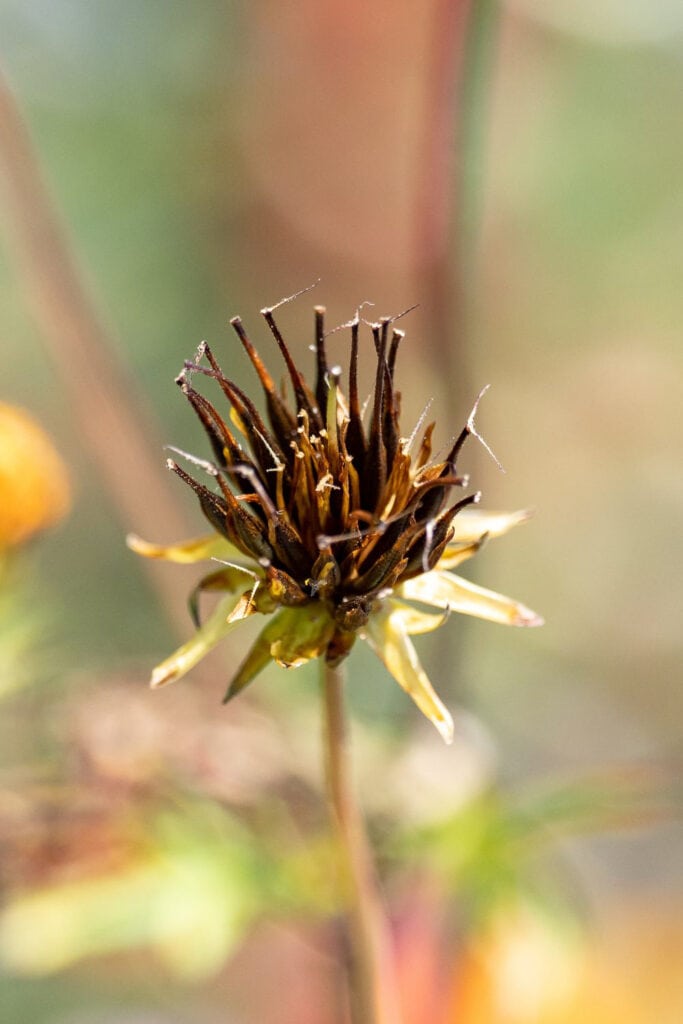


Common FAQ’s About Planting Cosmos Seeds
Q: What are the best companion plants for Cosmos?
A: Knowing what plants complement the cosmos can help in planning a garden. Cosmos pair well with other sun-loving plants like zinnias, marigolds, sunflowers and dianthus.
Q: When is the best time to plant cosmos seeds?
A: People often wonder when to start planting cosmos seeds. The best time is after the last frost in spring, as cosmos seeds need warm soil to germinate effectively. In regions with mild winters, seeds can also be sown in autumn.
Q: What common diseases can affect Cosmos?
Three main fungal diseases can infect cosmos flowers:
Powdery mildew: It appears as a white powdery coating on the leaves and stems of the plant. Powdery mildew can stunt the plant’s growth and make the leaves yellow and drop off.
Botrytis blight: This fungal disease, also known as gray mold, causes the flowers to turn brown and become covered in a gray, fuzzy mold. It is most common in cool, damp weather.
White smut: This fungal disease causes white spots to appear on the plant’s leaves. The spots may turn brown or black as the disease progresses. White smut can also cause the leaves to become distorted and stunted.

Other Gardening Posts from WM Design House
If you love this post about planting cosmos, you might also enjoy some of my favorite gardening posts.
Wrapping Up
Planting cosmos seeds is a delightful and rewarding experience, perfect for gardeners of any skill level. These easy-to-grow flowers bring vibrant color and continuous blooms to your garden, attracting pollinators and brightening spaces with minimal care. Whether you’re a seasoned gardener or just starting out, cosmos are a wonderful addition that promises beautiful and bountiful results.


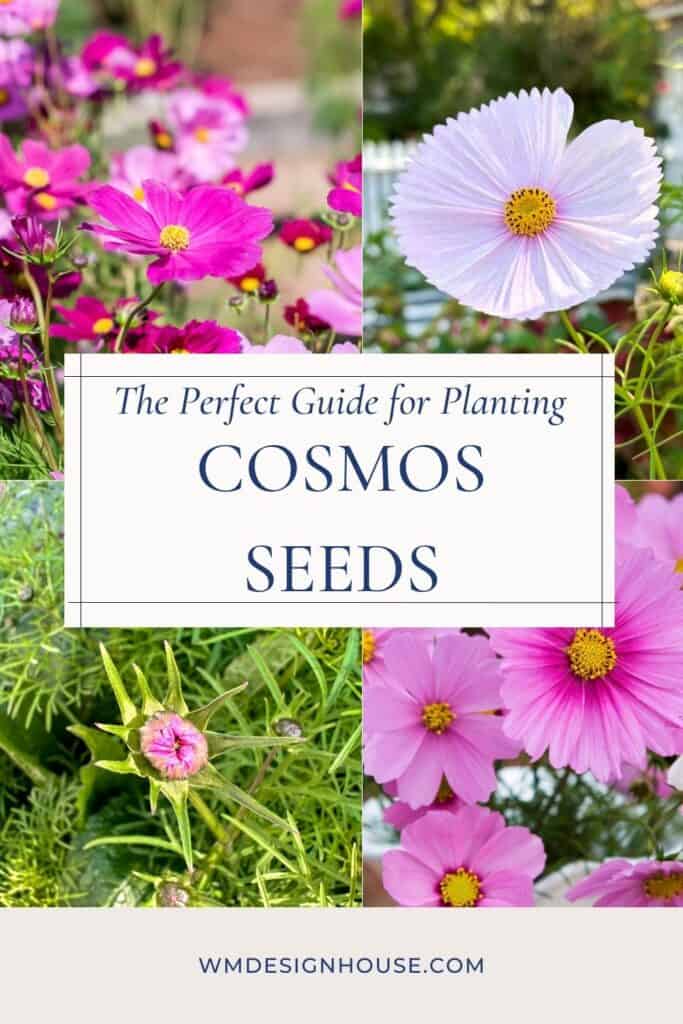
More about me!

Hello, I’m Wendy – a dedicated homemaker with a deep passion for decorating, gardening, cooking, and crafting. I find joy in harmonizing beautiful elements to fashion a space that is both comfortable and inspiring. I will help you create a beautiful home, one project at a time.
Connect with Wendy
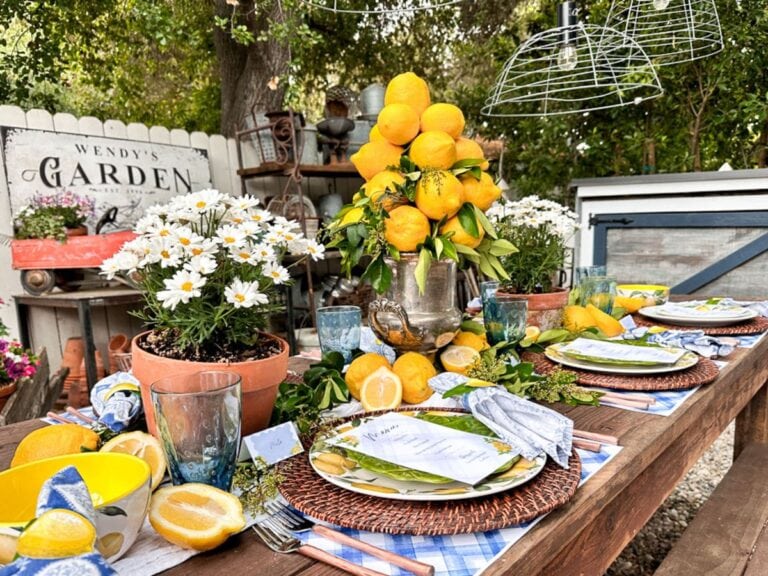
Summer Tablescape with Lemons and FREE Lemon Printables
Join me in creating a stunning summer lemon tablescape! With just a few simple items and my free printables, you’ll have a refreshingly beautiful setup that will impress your friends and family.

How to Make a Stunning DIY Lemon Centerpiece
Learn how to create a beautiful and fresh DIY lemon centerpiece that will brighten up any table. Using simple materials and easy steps, you can add a vibrant touch of citrus charm to your home decor.
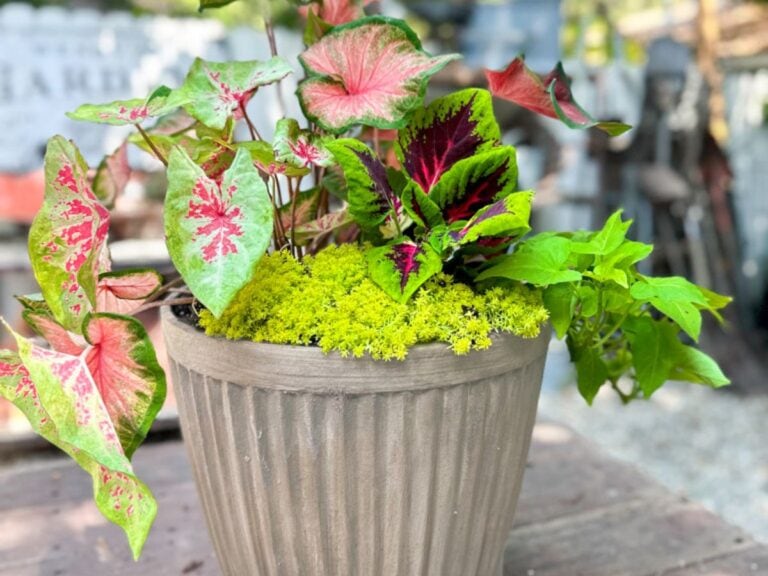
DIY Cement Planter: Pottery Barn dupe, fluted Concrete Pots
Create fluted concrete pots with our DIY cement planter tutorial. This easy Pottery Barn dupe adds an economical decor to your garden.


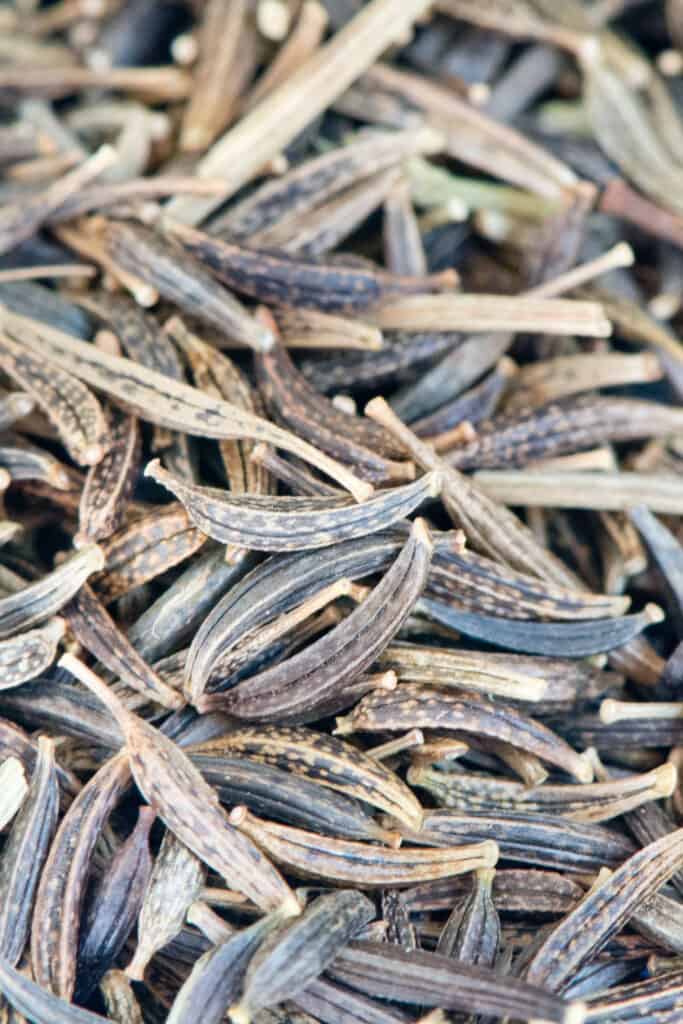
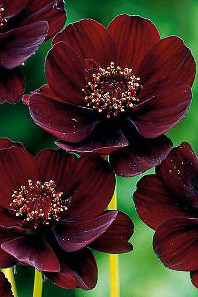

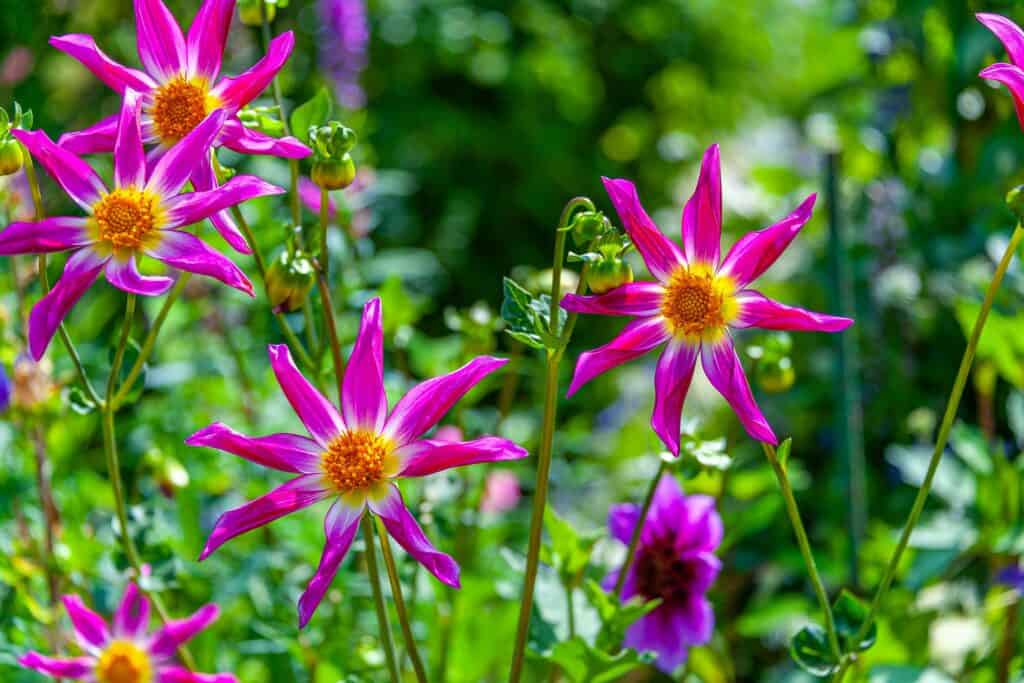
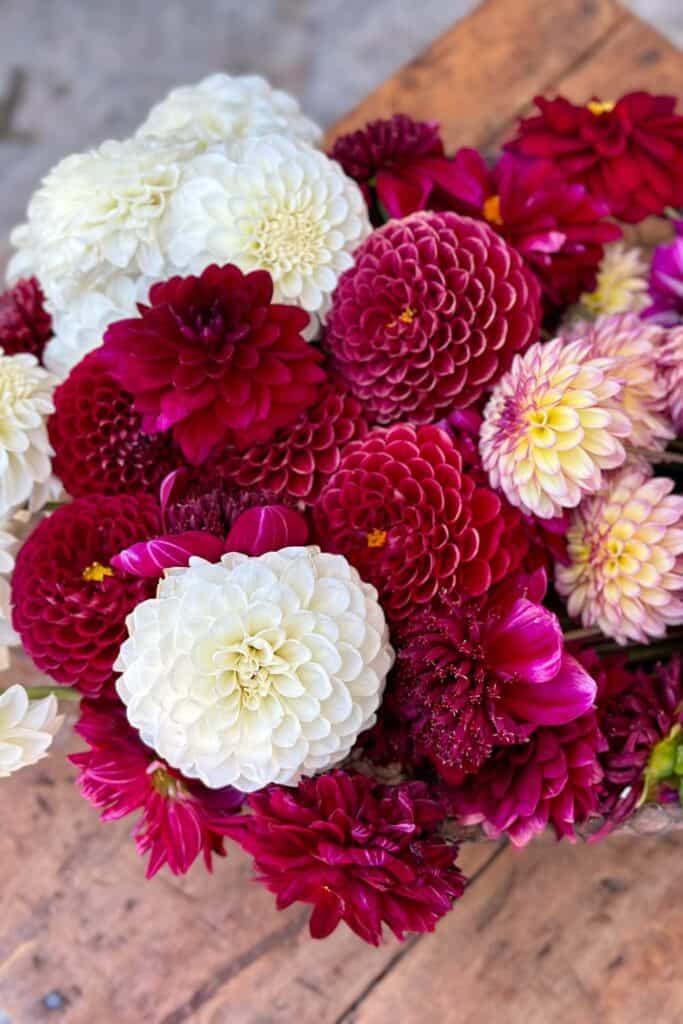
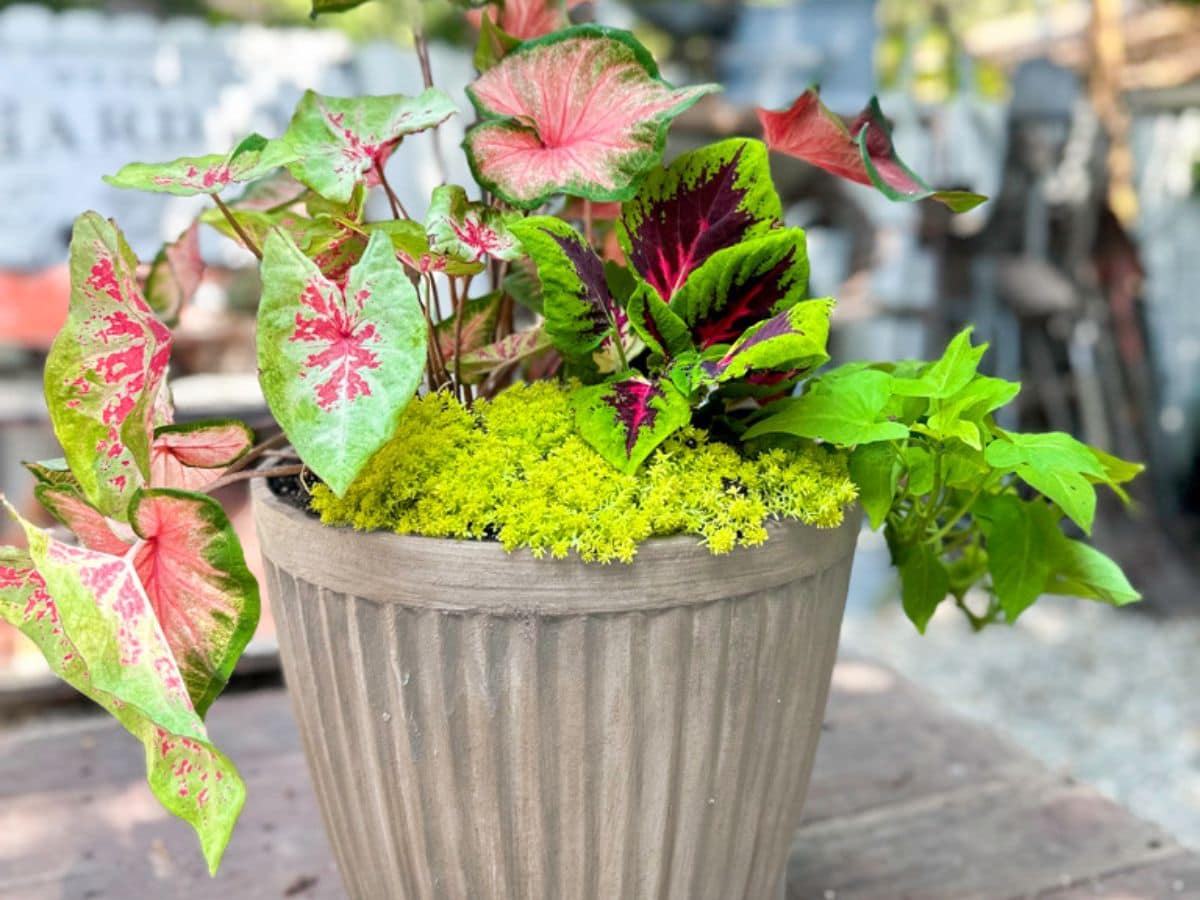
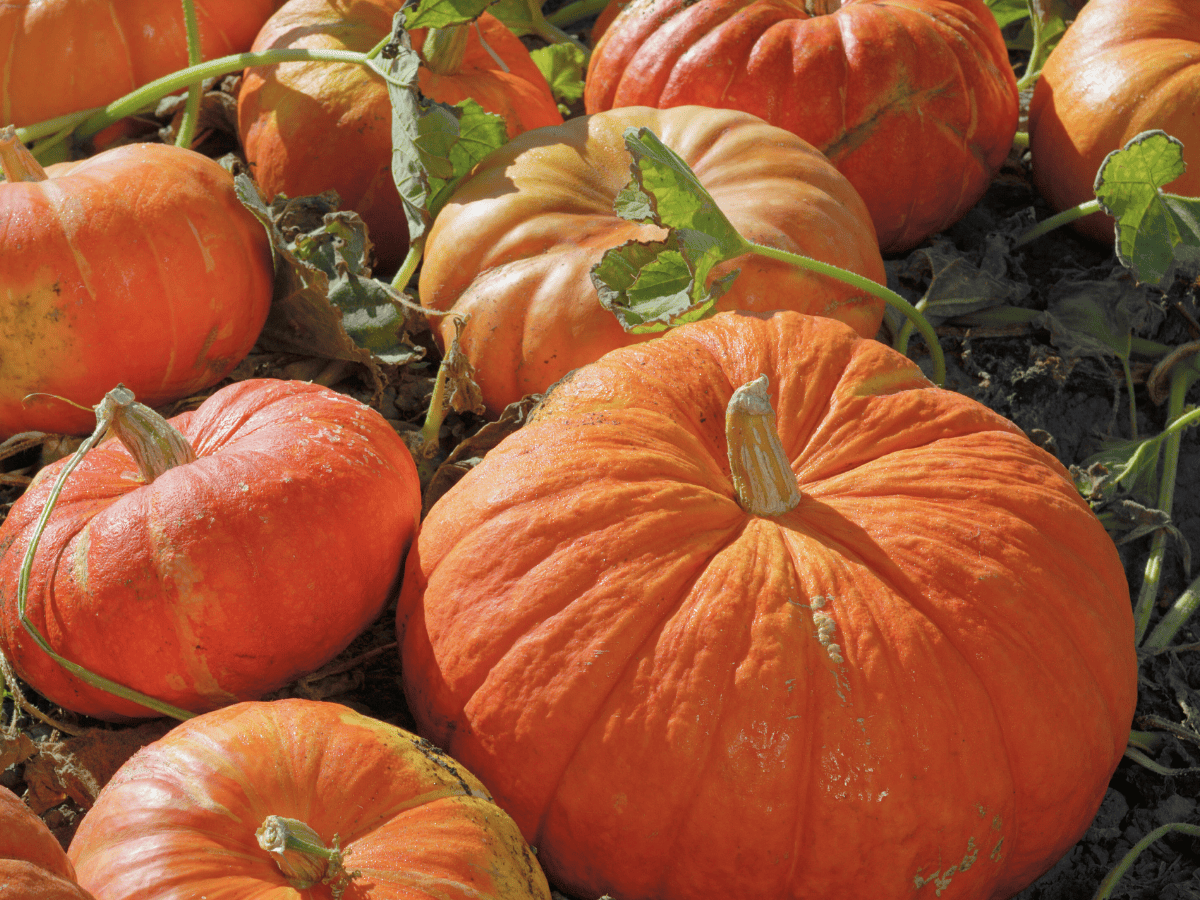
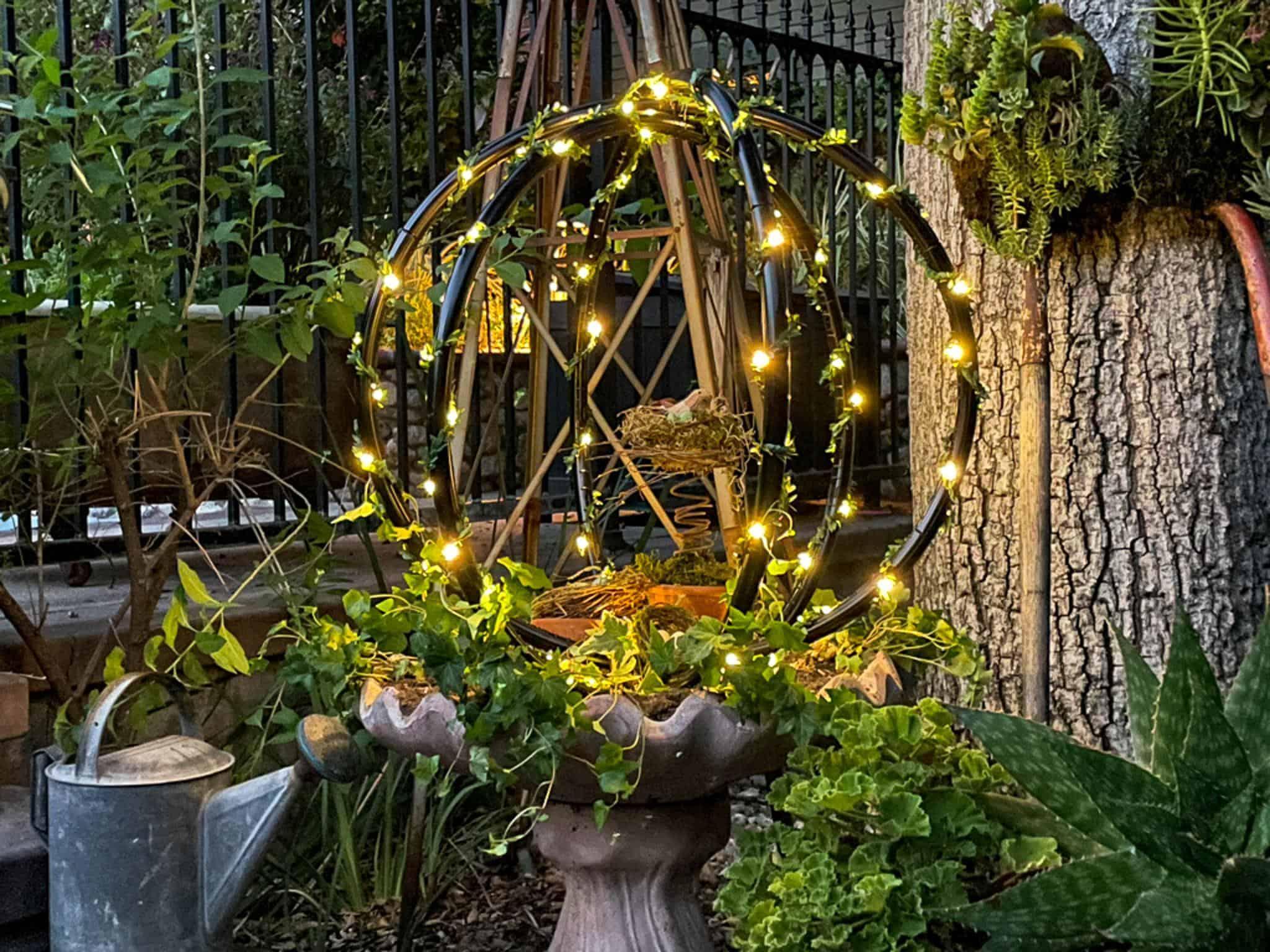
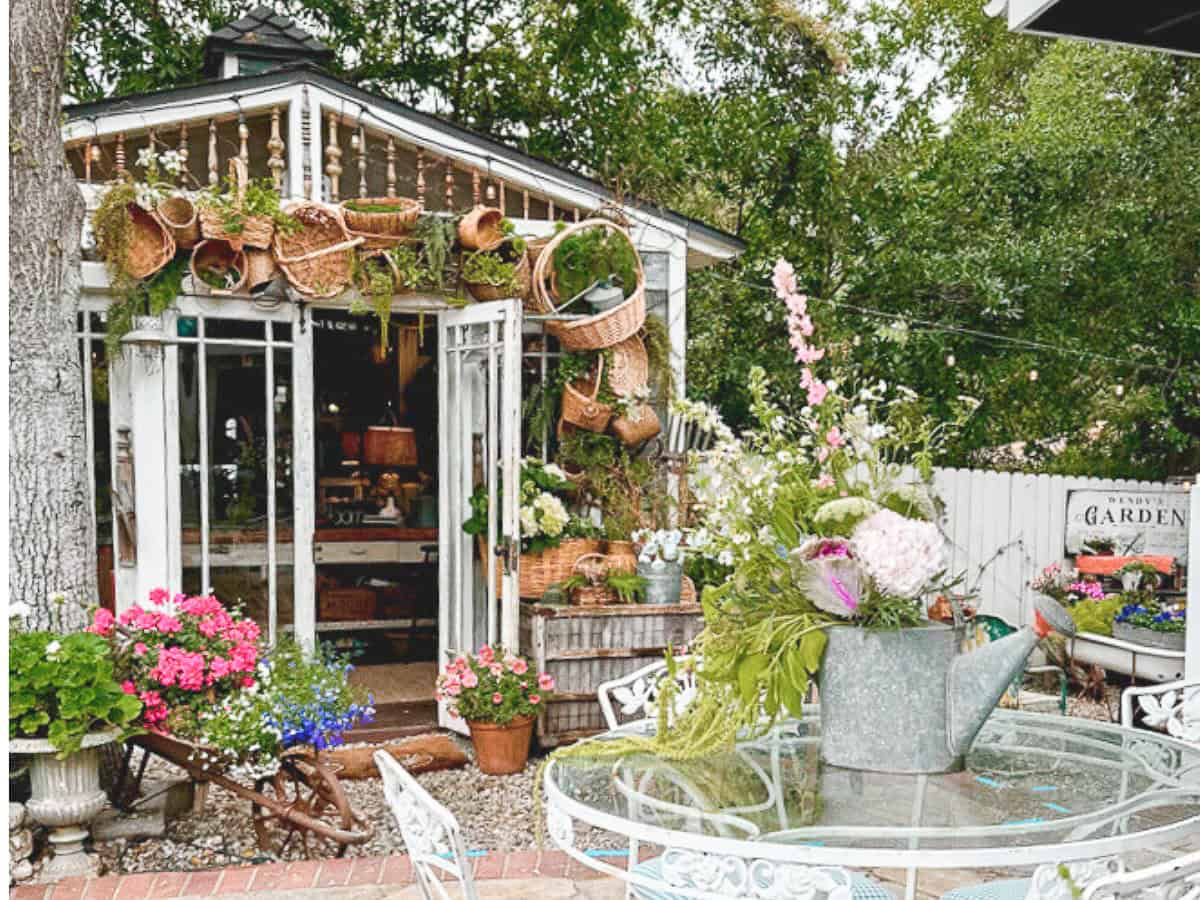

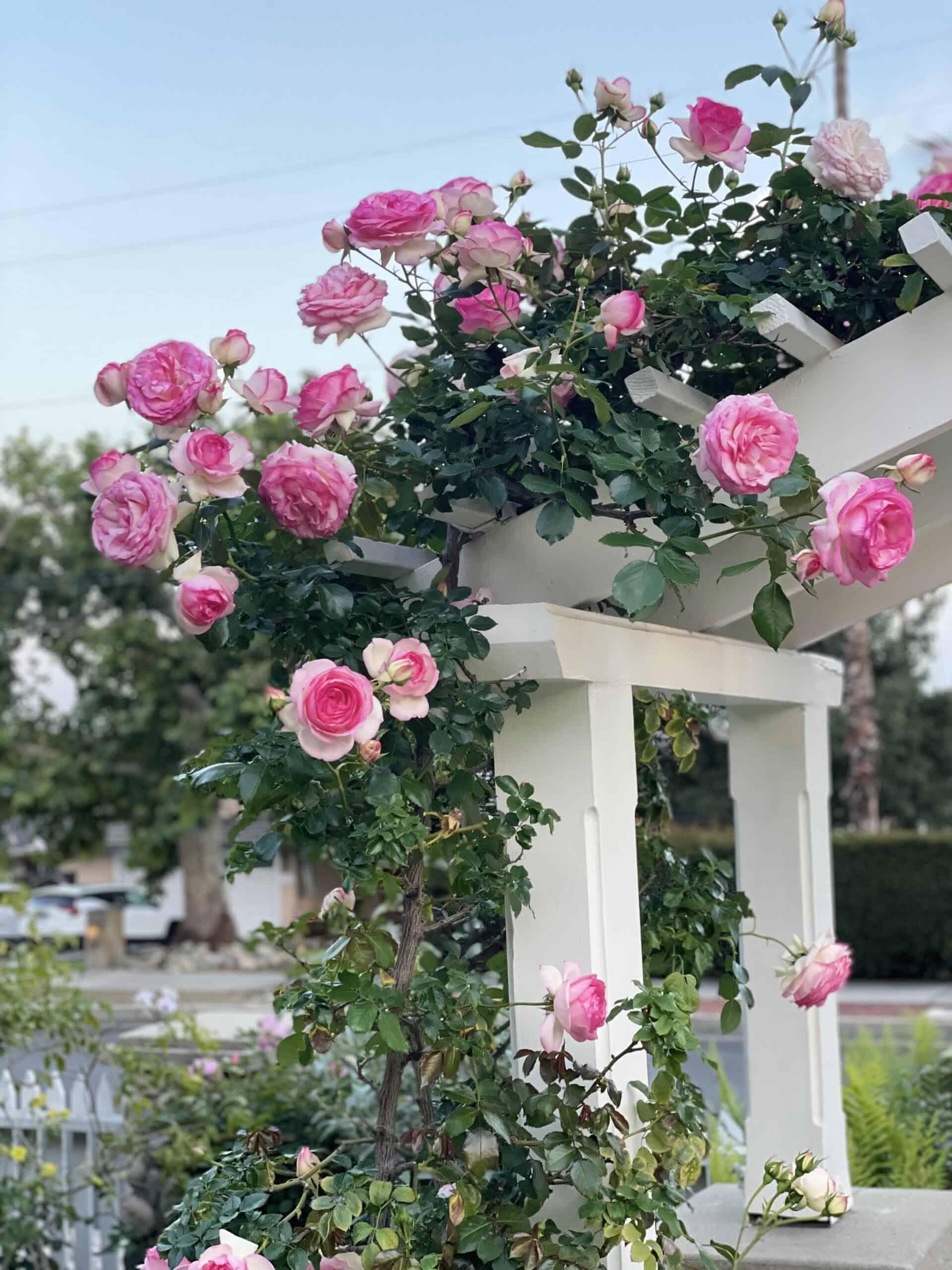
Wendy, I think I’ve only planted one small seed packet of cosmos and nothing ever came up. Thanks for the inspiration as it makes me want to try again.
Thanks Mary. I hope you’ll try again. They are so pretty and I love having them in my garden.
So many great tips, and gorgeous photos, Wendy! We still need to get together! 😉 I’m delighted to be featuring your post at the EXTRA BIG Tuesday Turn About this week!
Thank you Julie. I appreciate the share!
Oh I love cosmos, I had a beautiful pink one that a friend gave me in the garden at our old house. We don’t really have anywhere suitable for it where we live now but I love seeing it around.
They are so pretty aren’t they. I’m sorry you don’t have a space for them now.
Cosmos is such a fresh, happy flower! Thank you for all of the great tips!
Thanks Missy. I couldn’t agree more!